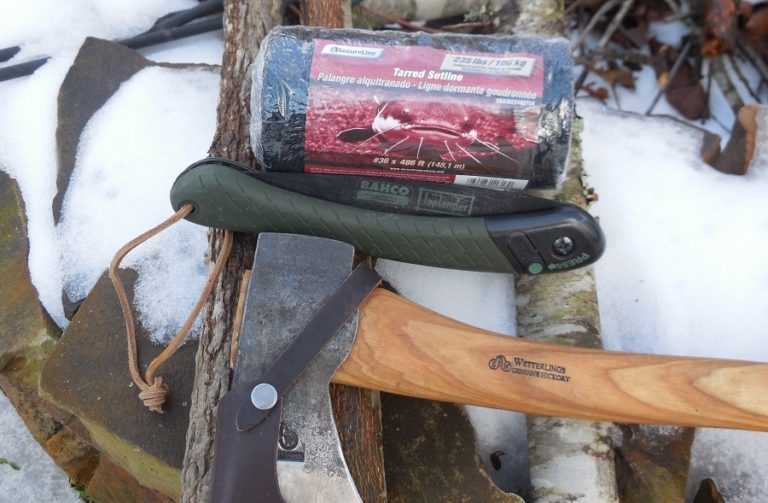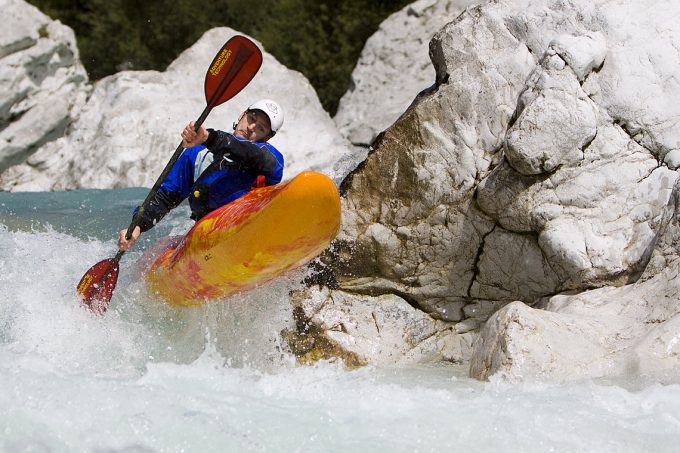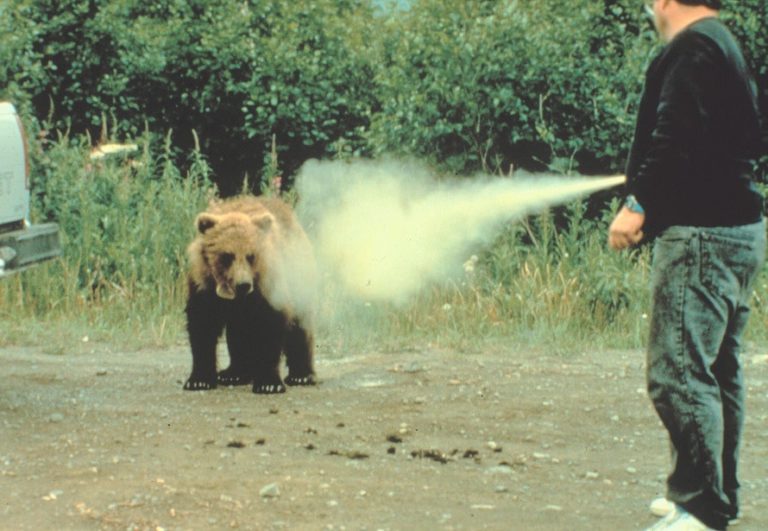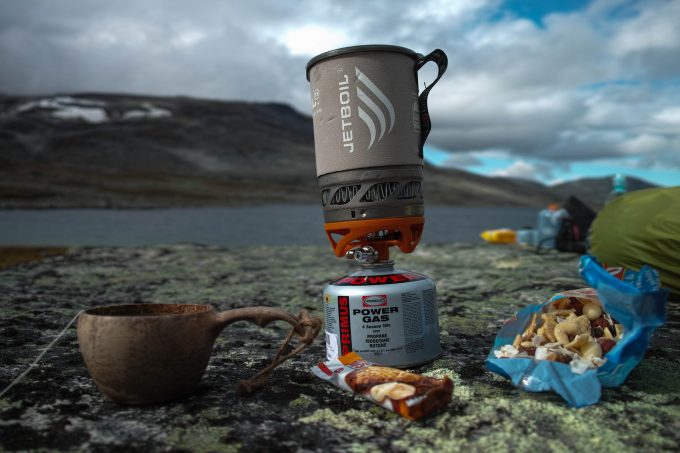Sleeping In a Tent: Mr. Sandman, Bring Me a Dream
There is something about sleeping in a tent that makes us have a sense of adventure. It is fun and for many something out of the ordinary. Most of us enjoyed building tents or forts as kids; we threw blankets over furniture. It was our place to hide and get away. We felt secure.
When camping, our tent will provide the same feelings; a getaway, adventure, and security. In this article, we will cover some sleeping tips for campers as well as what to wear to bed when camping. We will discuss tents, sleeping pads, and bags and finally, sleeping garments, to provide you with some ideas about how to sleep in a tent very comfortable.
Tent 411
There is such a variety of tents it is difficult to know where to start. Tents come in every style and size imaginable. There are cabin tents that will hold whole Boy Scout troops under one roof all the way down to the personal tent with just enough room for one.
Typically, for avid backpackers, the size of the tent will be small and most likely accommodate 1-2 people. For families that are doing car camping, a cabin-style tent that has room for the whole family including the dog will be in order. Let’s look at a small tent and a cabin tent so we include both types of campers.
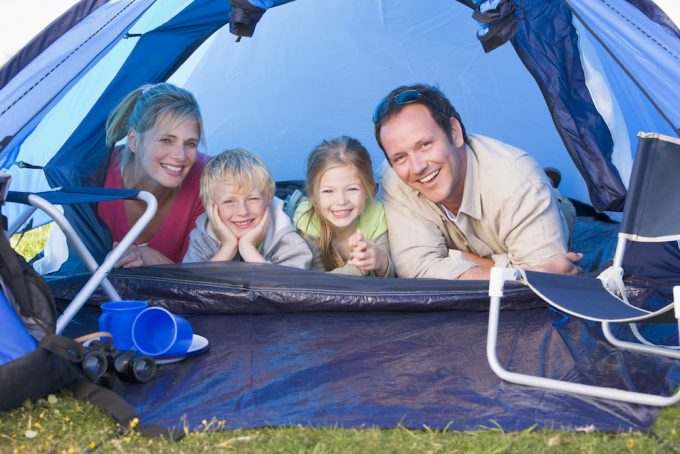
General Information on Tents
The season and type of climate you will be camping in will somewhat dictate the type of tent you will need. For example, if camping in a damp region that typically gets a lot of rain, such as the Pacific Northwest, you will want to have a rain fly for your tent to keep out the precipitation.
If camping where the weather could be harsh, such as winter climates, you want a tent designed for winter. When in arid regions there will be no need for a rain fly but you will want plenty of ventilation. All of these different aspects of your trip need to be taken into consideration.
Of course, most of us are not going to buy a tent for every season, so look for a tent that is versatile and will cover the widest range of conditions in which you expect to camp.If you are not ready to make an investment in a tent try finding a good used one to buy or borrow one from a friend.
Some retailers may also rent tents. REI Cooperative is one that rents tents in certain states. Check with your local sporting goods stores to see what you can find in your area. This will give you sort of a “try before you buy” experience.
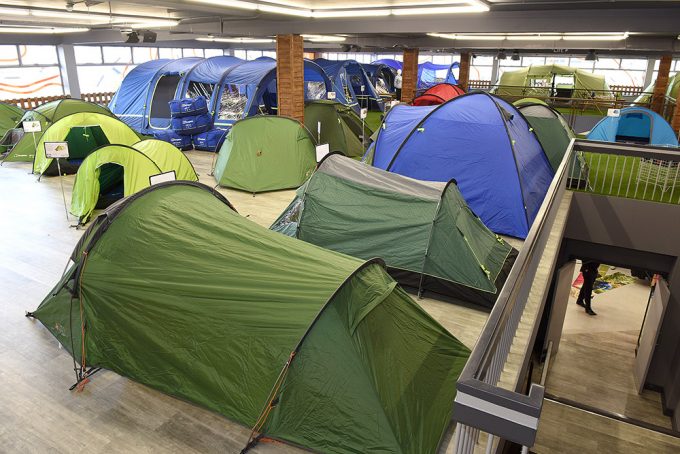
Before you go, make sure you give your tent a test run by setting it up in your yard. Check to make sure everything is in good working order and that you know how to put it up. This is especially true if you took your tent out of storage after sitting over the winter season. Make sure a little rodent didn’t chew a hole in your temporary home! Here are a few other tips you should take note of.
- Seal the seams. Not every tent is made equal. Make sure to get some seam sealer and go over all the seams inside and out to make sure you will not have any leaks. Do this at least a week before you go so it has plenty of time to dry.
- Have a footprint or ground cover. This is a tarp or fabric layer that goes between the ground and the bottom of the tent. Its purpose is to protect the bottom of the tent and also keep out any moisture that can transfer up from the ground. No one likes to sleep on a damp floor. Many tents will have footprints that are made specifically for that tent; it is a nice accessory.
- Check the netting for holes. You will want to make sure the mosquitoes sleep outside of your tent. So, repair any tears you find in the netting. Most sporting goods stores have repair kits.
- Check for holes in the fabric. Depending on where you stored your tent, there may be a chance you could have gotten a hole in the tent. Again, if it is small enough you should be able to repair it.
- Check your poles or frame. The last thing you want is to get hours away from home and find out one of your poles is broken. If you have a little ingenuity you should be able to pitch the tent anyway, but it is so much easier if you have the right pole. In fact, if weight is not an issue, pack an extra pole just in case.
- Check the stakes and guy lines. You want to make sure you have plenty of stakes that aren’t bent or misshaped. You also want to make sure the guy lines are not frayed and are in good shape to hold the wall of your tent in place.
These checks are necessary to make sure your sleeping in a tent goes smoothly.
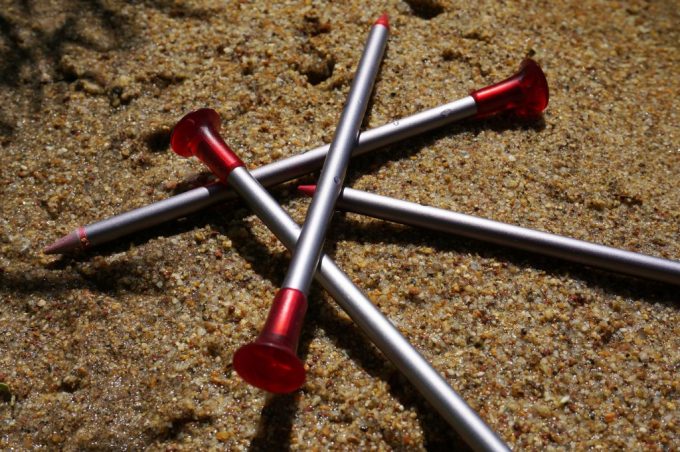
Small Tents
As we mentioned, the small tents are great for hikers and will accommodate 1-2 people. The “living space” for a backpacker is 15-20 sq. ft. which is basically enough space to crawl in and lay down. For the single tents, there is really no discussion as to where to sleep since the design of the tent will dictate where your head goes; these tents typically taper toward the feet.
These tents typically come with a garage or vestibule to store your gear because there definitely won’t be room in the tent itself.For rectangular tents that accommodate 2 people, it is typical to lie side by side with your heads away from the opening or near the opening, depending on your preference.
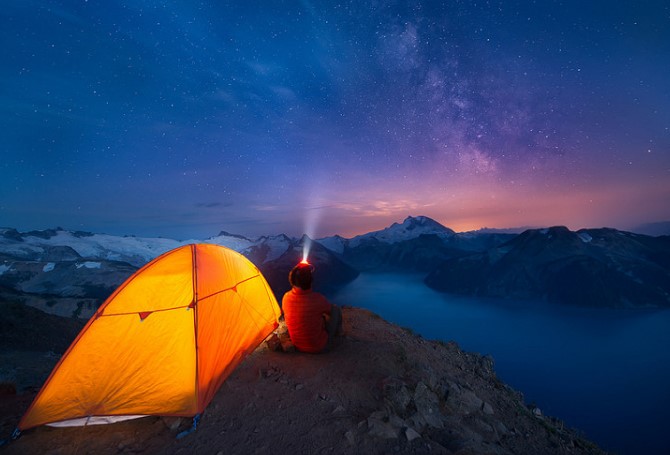
If you are using mummy style sleeping bags you could sleep head to toe giving the two sleepers more shoulder room. For round or octagonal tents you would again sleep side by side. There would be room for your gear to go between you and the tent wall.
For small tents there is not much room for gear, so you may want to consider a tent with a small vestibule at the entrance so you have a place to stow your gear. Some tents will also accommodate a gear loft that allows you to store your gear overhead. You don’t want your tent too crowded. Everyone needs room to stretch out and move a little bit.
Mid-sized Tents
A larger tent will be in order when car camping with your family or a group of friends. There are tents that can accommodate 4-8 people. The living space for this type of camping is typically between 25-30 sq. ft. per person allowing space for an air mattress and room to move between sleeping spaces.
Some tents are rectangular, some are octagonal, and some have defined “rooms”. Make sure to choose a tent that can hold the number of people that will be sleeping in the tent. Most of us want room to move around. So it is best to subtract 2 from the number of people the tent is rated for in order to get more space per person.

For example, a 6-person tent will really hold 4 people comfortably. The chart below gives an idea of tent floor area compared to capacity.
| Rated Capacity | Tent Floor Area | Comfortable Capacity | Floor Area Per Person |
| 2-person (backpacking) | 35 to 49 sq. ft. | 2 adults, snug | 20 sq. ft. per adult |
| 4-person | 60 to 70 sq. ft. | Adult couple | 30 sq. ft. per adult |
| 6-person | 90 to 100 sq. ft. | Family of 4 | 25 sq. ft. per adult & 20 sq. ft. per child |
| 8-person | 120 to 130 sq. ft. | Family of 6 | 25 sq. ft. per adult & 17.5 sq. ft. per child |
Tent Height
You will also want to consider the height of your tent. Cabin or wall tents are going to be taller and many will allow adults to stand upright at least in the center. The smaller backpacking tents will most likely only offer a sitting or kneeling height.
Some tents will have greatly diminished height capacity at the edges. For a group of campers in one tent, the taller the tent the more comfortable you will be because it will be much easier to move around inside the tent. Wall tents actually have side walls which give extra height capacity at the edges of the tent.
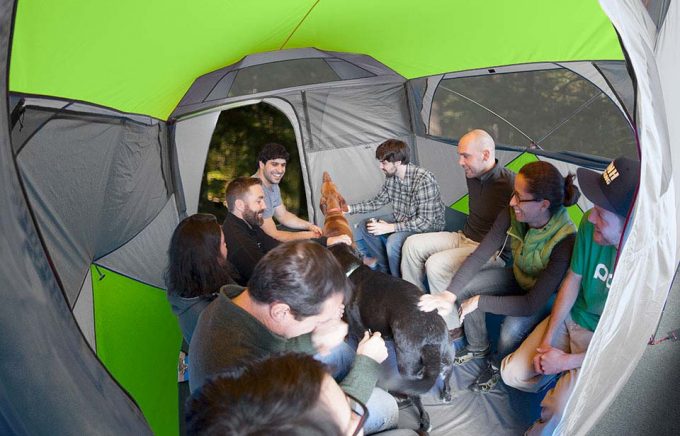
You can find tents that come in wall heights ranging from 2-3 feet up to 5-6 feet. It is also necessary to consider the height if you plan on sleeping on cots. You will definitely need higher walls to accommodate the height of the cot and then add on at least 3 feet so the person can sit on the cot and not touch the ceiling of the tent.
Activity | Height |
Sitting | 3 feet (36”) |
Kneeling | 4 feet (48”) |
| Stooping | 5 feet (60”) |
Standing | 6 feet (72”) |
| Roaming | 7 feet (84”) |
Tent Placement: Just Being Nature’s Friend
You can have the right tent but if you place it in the wrong spot, it is practically worthless. Choose level ground that is free from debris, rocks, sticks and other things that can poke you. Avoid pitching your tent near or over tree roots. In fact, don’t pitch under a tree that has limbs that look like they may fall.
Also, in a campground try to pick a spot that is away from all the action. It will be much quieter. In addition, don’t pitch your tent near a busy road or highway. Try to diminish the opportunities for a lot of noise at night.
Sleeping Pads & Bags: Dream a Little Dream of Me!
The Bed
There are many basically three types of sleeping pads: traditional air mattresses, self-inflating pads and closed-cell foam pad. For the minimalist, a small closed-cell foam pad the width and length of your body will be sufficient. It can be ½” to 2” thick.

This will act as a barrier between you and the ground. It will give some added insulation, smooth out any bumps, and give you a minimal cushion. Because of weight concerns, this is typically what the backpacker chooses to bring.
There are high-tech, self-inflatable pads that use both air and a small amount of insulation. They are actually very thin but add a lot of comfort in terms of extra padding and added warmth.
Of course, there are the larger canvas type air mattresses that you can blow up manually or with a small hand pump or an electric pump. These air mattresses take up more space because they are bulky and thicker. They do offer a great amount of cushion and do a wonderful job of erasing any bumps in the ground.
Finally, there are cots. There are wood and canvas cots that fold up; think of the traditional Army cot. Then there are cots that have aluminum frames and thin foam mattresses. The nice thing about a cot is you do not have to get all the way down to the ground. They can be used as a bench to sit on.
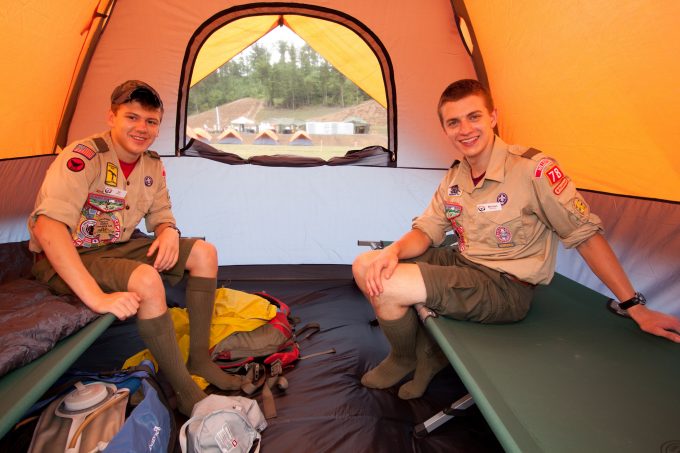
One of the downfalls is they take up a lot of room, so you will have to take that into consideration when deciding on the size of the tent to buy. Cots are also not as warm as pads on the ground. The cold night air flows underneath you. This can be remedied by using a thin foam pad on top of the cot and making sure you have a sleeping bag that is rated for the temperature in which you will be camping.
The Bag
Sleeping bags come in different sizes, shapes, and fabrics. The old flannel sleeping bags of yesteryear are not a good choice. They are heavy, and if they get damp , you get damp. When damp, you will get cold.
A better choice is to get a sleeping bag that is made of polyester/nylon that will dry quickly if it gets damp. The insulation can either be polyester or down. There are justifications for both types of insulation. The best thing is to get a sleeping bag that is rated for the temperatures in which you will camp.
See also: Best Down Sleeping Bag: Top Options for Backpacking Adventures
There are styles of sleeping bags to consider as well. The mummy style is nice because you can pull the hood around your head and shoulders and keep the warmth in. There are also mummy style bags that have an extra roomy elephant foot if you need more room for your feet. A rectangular bag may be fine in climates where you don’t need to cover your head and shoulders.
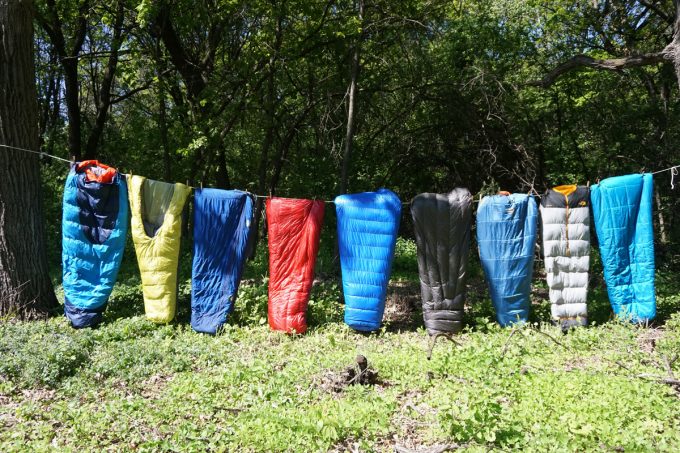
You will want a bag with a two-way zipper so you can zip it from the top or bottom to give you added ventilation as needed. And there are bags with a right-hand or left-hand opening; your preference.
Sleeping Attire: Long John’s Here We Come!
There are some definite do’s and dont’s for sleeping attire.
- Do not wear sweaty, dirty clothes to bed. Any remaining moisture in your clothing will cause you to get a chill.
- Do not wear heavy bulky clothing to bed. This type of attire can actually hinder your sleeping bag from doing its job of keeping you warm.
- Do wear a clean, light base layer. Something along the lines of long underwear will work well. Avoid cotton, but instead get something light weight and breathable like silk or polyester.
- Wear socks. Your extremities are the things that get cold first. A nice pair of Merino wool socks is great; use lightweight wool in the summer and heavier wool in the winter.
- If you tend to get cold, wear a hat and a neck gaiter to bed to keep the warmth trapped in.
Other Accessories: Gear Up!
If you are a light sleeper you may want to consider bringing earplugs and an eye mask. Your tent mate may snore and you want to block out that noise, or at least soften it. In the northern regions during the summertime, the sun rarely sets. It is nice to be able to cover your eyes for more darkness.

Flashlights and small LED lanterns are great. Depending on where you are camping, the tent can get very dark at night; a light comes in handy. Check out our review of the top camping lanterns for more information. There are nice head lamps so you can be hands-free for your tasks. There are tents that come equipped with lighting. Just a small flashlight might be all you prefer.
Pillows are very personal. Some folks can’t sleep without their special pillow. If this is you, bring it along. Some of the high-tech pads have pillows that are built in. You can buy inflatable pillows. You can adjust the softness by the amount of air you fill them with. Or as mentioned earlier, bring your own.
Another great accessory is a tarp that can be hung overhead. This is just one way to assure you won’t get wet inside your tent if it does happen to rain. If you put a tarp up over your tent make sure the tent is totally under the tarp. You do not want a corner or an edge of the tarp creating a waterfall of sorts that flows right onto your tent. Also, make sure to hang the tarp with a slope so the water will drain off and not collect in the middle. You can also read our tips on how to easily seam seal a tent to keep you dry and protected from the rain.
Routine: Knowing What You Do
Finally, if you have a particular routine you do at home before going to bed, do it at the campsite as well. If you drink a cup of tea while reading, then do it at the campsite. By keeping your routine close to normal it will make you more comfortable and seem like you are not that far from home.

Conclusion: Rock a Bye Baby
Camping can be absolutely fabulous or it can be completely ruined by a bad night’s sleep. Take measures to ensure you will sleep like a baby. Choose a good tent, pick the right spot, lay down the right pad, roll out the right sleeping bag, wear the right clothes and bring the right accessories and you will be all set!
Seriously, your shelter, bedding, and pajamas in the right combination will equal a good night’s sleep. A little preparation in advance goes a long way to providing you with the sleep you need.
For the best backpacking tent, check out our earlier article that deals with this interesting topic.

